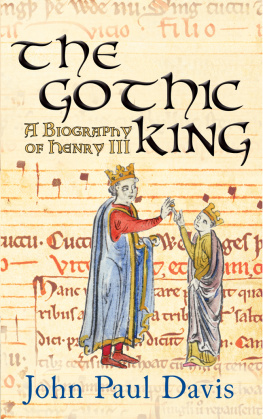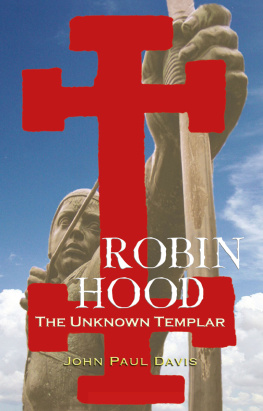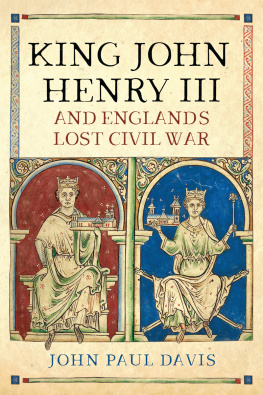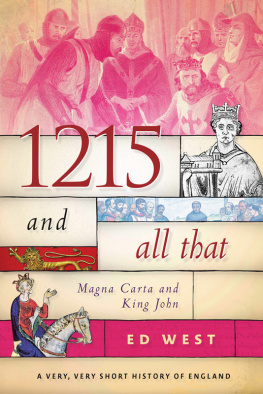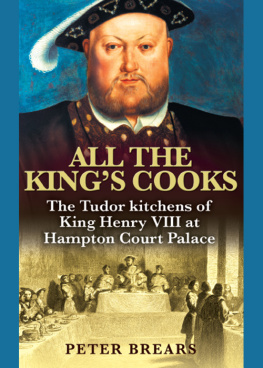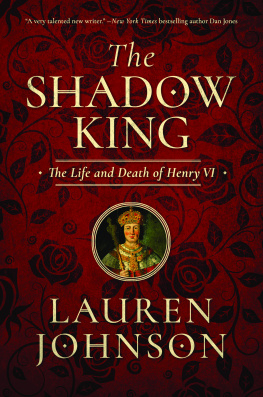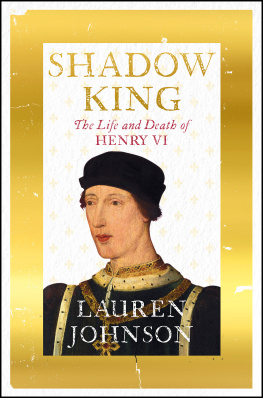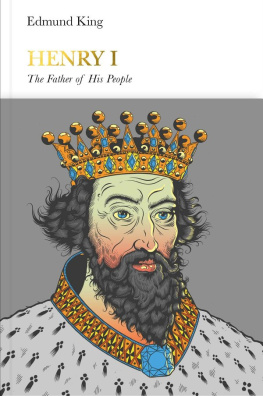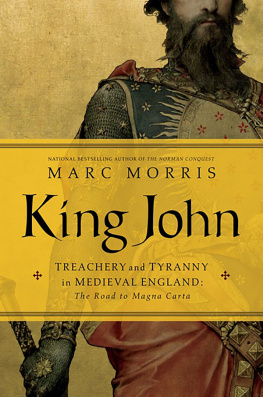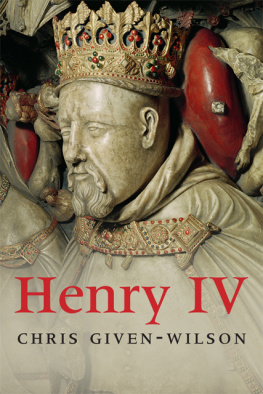Praise for Robin Hood: The Unknown Templar
by John Paul Davis
Prepare for the most fascinating read you will get in ages Birmingham Post
A unique take on who this Robin fella really was Nottingham Evening Post
[Davis] meticulously lists references from literature and history which ... add up to a convincing argument that not only was Robin Hood a real person but that he was indeed a Templar and that he was based in Yorkshire, where there were ten Templar houses. Yorkshire Post
John Paul Davis goes back to the earliest ballads and proposes an unexpected identity for Britains most famous man in tights... By accepting that it is sometimes necessary to return to the orginal sources, we may find that the jigsaw of past events fits together more neatly. Particularly if you look in the right place. Fortean Times
This Robin should go over well with fans USA Today
THE GOTHIC KING
Henry of Winchester (12071272) was the eighth monarch to rule England after the Norman invasion of 1066. Crowned Henry III in 1216, he was the first child king since Ethelred the Unready. The eldest son of Bad King John, he was nephew of Richard the Lionheart and father of Edward I. Although often overlooked by historians, he was king for fifty-six years, despite, at the time of his accession, the power of the monarchy being at an all-time low, with much of England being under the control of Prince Louis of France and with a constant threat of uprising and civil war. Henrys rule was dogged by rebellion in Wales, by feuds with his barons and with France and by a long-running war with his brother-in-law Simon de Montfort. Yet during his reign England prospered and developed a national identity, Magna Carta was ratified and the first national Parliament was created at Westminster. Apart from assuring the survival of the English monarchy, Henry is perhaps best remembered for the remarkable Gothic ecclesiastical architecture he championed, his most enduring monument being Westminster Abbey, largely rebuilt under his personal direction.
This is the first major biography of Henry III for many years, and its author brings his usual thorough research and fresh approach to bear on this important yet often neglected historical figure.
JOHN PAUL DAVIS is the author of two acclaimed historical biographies, Robin Hood: The Unknown Templar and Pity for the Guy: A Biography of Guy Fawkes.

DEDICATION
For my parents
ACKNOWLEDGEMENTS
Writing a biography of Henry III has been an enormous pleasure for many reasons and greatly enhanced by the past efforts of others. Before the nineteenth century it would have been nearly impossible to complete a book of this magnitude without decades of painstaking research of the original paper records. Thanks to the work of people such as Henry Richards Luard and John Allen Giles in the mid-1800s the work of the original chroniclers are today accessible to all and are undoubtedly the most important sources for this work. Similarly over the past century our knowledge of the period is indebted to the work of a number of historians. Among the most relevant to this investigation are the works of Sir Maurice Powicke, David Carpenter, J.R. Maddicott and Sir James Holt, all of which have added greatly to my understanding, and enjoyment, of the subject. Obviously any errors in the text are my own responsibility.
Since embarking on my research I have been led on the most unexpected journey, not only through history but across England and Wales. It has been both entertaining and enlightening. My visits to Winchester, Canterbury, Lewes and Evesham were especially memorable. On these occasions I owe a debt of gratitude not to a single eminent historian but to the organizations that care for their buildings preservation. Over the past three years I have been aided by all types of people, including librarians, clergy, and, perhaps most important of all, volunteer guides, every single one of which took the time to answer my questions with genuine enthusiasm. Thanks to the tireless commitment of bodies such as the Simon de Montfort Society, the Lewes Priory Trust, the Sussex Archaeological Society, the Churches Conservation Trust, Cadw, English Heritage and the National Trust not only do the physical sites continue to stand long after those who once occupied them but each decade seems to bring new discoveries that continue to shape our understanding of history.
As usual I extend my gratitude to all at Peter Owen Publishers for commissioning the book and for their support throughout the writing of my three historical biographies.
My most heartfelt gratitude must be reserved for my friends and family, in particular my wonderful parents Mike and Kay Davis whose support and enthusiasm has shaped the creation of this book. Separate thanks are also due to my father and my uncle, Pat Sayles, for contributing the photographs credited to them in the plates section and, in some cases, travelling specifically to take them.
My last acknowledgement I reserve for little Adam. Welcome to the family!
CONTENTS
PREFACE
History is strange in many ways. Whatever the time, place or country, its tales are often subject to different interpretations based on our environment and perceptions.
For no period is this more true than the Middle Ages. For many people, particularly Europeans, this is the period that symbolizes history most completely. When visiting one of the great castles or cathedrals it is easy to let our imagination run wild, allowing us to connect with the way things were, at least according to the way we have been brought up to see them. Yet the possibilities are endless. When writing a history book or essay, be it a broad investigation or a historical biography, it is common to start out with one set of beliefs and end with another. The Middle Ages are like that.
It was a similar experience that set me on my way to writing the book you are about to read. Few people in England will have heard of the village of Beaudesert. Located eight miles from Stratford-upon-Avon, adjacent to Henley-in-Arden in the heart of Warwickshire, it is easily missed if you do not know it is there. Even less well known is that Beaudesert once had a castle. In its prime this had been a glorious motte-and-bailey structure, typical of early Plantagenet England, overlooking the village. Researching the matter, I learnt that its owners had been a family called the de Montforts. Like most English people I had heard the name before. Many will be vaguely familiar with the exploits of Simon de Montfort, 6th Earl of Leicester, who brought about reform during the thirteenth century. The discovery at Beaudesert intrigued me. Could it be that Simon had a castle that history had forgotten?
Two surprises awaited. The Angevin pedigree of the Earls of Leicester was sufficiently removed from the Norman-bred de Montforts of Beaudesert to confirm that there were no blood ties, but the families did have a different connection. The lord of Beaudesert at the time of Simons rise to power was Peter de Montfort, himself instrumental in the reforms of 125865. Incredibly, the lord of the disappeared Beaudesert Castle was the man who oversaw Simons famous Parliament of 1258. In a way he was the first speaker of the House of Commons.
At the time I was writing another book, later to be published as Robin Hood: The Unknown Templar. According to one medieval chronicler, the legendary outlaw had lived during the thirteenth century and been in league with the de Montforts. My quest for Robin Hood took me to Simon de Montforts headquarters, the mighty Kenilworth Castle, not far from Beaudesert. If this chronicler was correct, the historical Robin Hood had been part of a major rebellion. In searching for the legendary outlaw I found myself wondering what exactly happened during the thirteenth century to encourage Simon and Peter de Montfort to pursue their political reforms.

